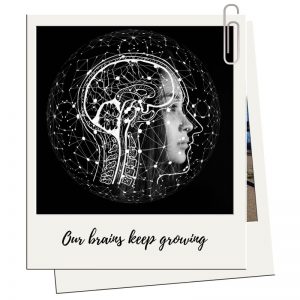 Until recently, it was thought that the brain was hardwired, growing throughout adolescents then becoming a stable, unalterable mass. Through modern research we now understand that the brain is more plastic in nature. Neuroplasticity describes how the brain can reorganise itself by forming new neural connections throughout ones’ life, consistently changing and altering in response to environment, behaviour and neural stimulation.
Until recently, it was thought that the brain was hardwired, growing throughout adolescents then becoming a stable, unalterable mass. Through modern research we now understand that the brain is more plastic in nature. Neuroplasticity describes how the brain can reorganise itself by forming new neural connections throughout ones’ life, consistently changing and altering in response to environment, behaviour and neural stimulation.
So if you want to learn a new skill, be it cooking or juggling, it’s never too late. Your brain will shift, grow and literally change shape as you acquire a new skill and the more you learn, the more you’ll enjoy learning too.
Understanding the concept of neuroplasticity, we appreciate the brains job is to learn, change and grow. Mental stimulation and brain training increase brain capacity considerably. Animals can develop up to 25% more neural branches with mental stimulation. Education is mental stimulation and enables the brain to grow and strengthen with learning, practice and use.
Michael Merzenich, neuroscientist and a pioneer in the field, claims that “brain exercises may be as useful as drugs to treat diseases as severe as schizophrenia”, and that “radical improvements in cognitive functioning – how we learn, think, perceive, and remember are possible even in the elderly.”
Neuroplasticity highlights our need to stay mentally active and continue to learn and grow right throughout our lives. Without stimulation, your brain, like any muscle in your body will atrophy. How can you stimulate the brains within your organisation and how can you utilise neuroplasticity in your workplace to positively impact the long term mental health of your colleagues?
If your interested in how your brain works and how that impacts your life, have a look at Norman Doidge’s book (2007). The Brain That Changes Itself: Stories of Personal Triumph from the frontiers of brain science. I think you’ll find it increbly inspiring. In fact, it may even change the shape of your brain.




